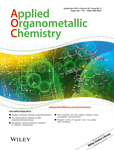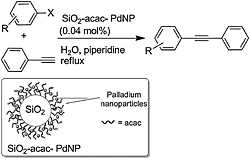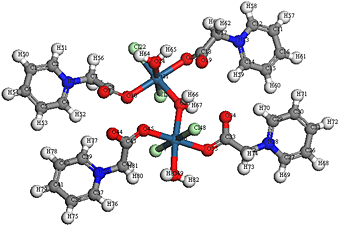Journal list menu
Export Citations
Download PDFs
Issue Information
Full Papers
Dicopper complexes catalyzed coupling/cyclization of 2-bromobenzoic acids with amidines leading to quinazolinones
- Pages: 661-665
- First Published: 07 July 2014

This work demonstrates an example of dimetallic complexes as catalysts for the C-N bond formation. Dicopper(I) complexes resulting from complexation of [Cu(CH3CN)4](PF6) with 2,7-bis(2-pyridyl)-1,8-naphthyridine have proved to be good catalysts for coupling/cyclization of 2-bromobenzoic acids with amidines leading to quinazolinones.
Efficient hydroxylation of aromatic compounds catalyzed by an iron(II) complex with H2O2
- Pages: 666-672
- First Published: 07 July 2014

An iron complex coordinated by three 1-nitroso-2-naphtholate ligands through nitrogen and oxygen atoms is applied as an efficient catalyst for the direct hydroxylation of aromatic compounds to phenols in the presence of H2O2, the hydroxyl radical is proved to be responsible for the hydroxylation by the experimental and theoretical results.
Chemoselective one-pot synthesis of terphenyl derivatives by sequential directed C―H functionalization–Suzuki coupling
- Pages: 673-677
- First Published: 02 July 2014
Ligand-free Pd/Cu-catalyzed decarboxylative coupling of aryl iodides with α-oxocarboxylates
- Pages: 678-680
- First Published: 02 July 2014

This paper describes a palladium/copper-catalyzed decarboxylative coupling of aryl iodides with α-oxocarboxylates. The cross-coupling reaction gives high chemical yields of aryl ketones and has wide functional group tolerance, making the transformation an attractive alternative to traditional cross-coupling approaches for aryl ketones.
Carboxyester hydrolysis promoted by novel nano-sized macrocyclic Zn(II) complexes
- Pages: 681-687
- First Published: 07 July 2014
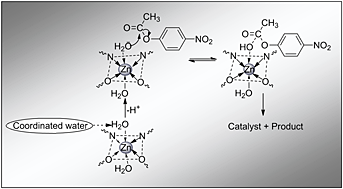
A novel series of nano-sized Zn(II) macrocyclic complexes has been synthesized using a template method, i.e. by the in situ reaction of Schiff bases and 1,4-dibromobutane in the presence of zinc(II) acetate dihydrate in ethanol. The complexes were characterized using spectroscopic methods, scanning electron microscopy and thermal analysis. The catalytic properties of these complexes were investigated kinetically for the hydrolysis of p-nitrophenylacetate and showed significant activity. Therefore, these complexes may serve as model compounds for hydrolytic enzymes.
Vinyl polymerization of norbornene catalyzed by 2-Py-amidine Ni(II) complex/methylaluminoxane systems
- Pages: 688-695
- First Published: 29 June 2014
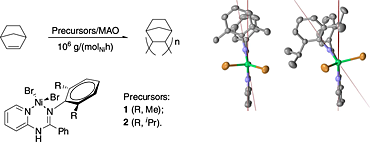
2-Py-amidine Ni(II) complexes were used as catalyst precursors with methylaluminoxane (MAO) as a co-catalyst for the vinylic polymerization of norbornene. The catalysts yield high-molecular-weight polymers (106 g mol−1, Mw/Mn = 1.68–2.78) at an activity level of 106 g (mol Ni)−1 h−1. The less bulky 1/MAO catalyst shows 2.5 to 3.5 times higher activities than the bulky 2/MAO catalyst.
Copper- and phosphine-free Sonogashira coupling reaction catalyzed by silica–(acac)-supported palladium nanoparticles in water
- Pages: 696-698
- First Published: 09 July 2014
Efficient cyanation of aryl halide with K4[Fe(CN)6]⋅3H2O catalyzed by a P–O bidentate chelate palladium complex under air
- Pages: 699-701
- First Published: 07 July 2014
![Efficient cyanation of aryl halide with K4[Fe(CN)6]⋅3H2O catalyzed by a P–O bidentate chelate palladium complex under air](/cms/asset/4f06a321-fe8d-40cc-9997-53b7d1c0f168/aoc3185-toc-0001.png)
Cyanation of aryl halide with K4[Fe(CN)6]⋅3H2O has been carried out in the presence of a high-activity catalyst: an air-stable hemilabile P–O coordinated cyclopalladated complex. This method is applicable to both activated and deactivated aryl halides and a variety of aromatic nitriles were obtained in good yields under aerobic conditions.
Pd(II) complexes bearing di- and monochelate fluorinated β-ketonaphthyliminato ligand and their catalytic properties towards vinyl-addition polymerization and copolymerization of norbornene and ester-functionalized norbornene derivative
- Pages: 702-711
- First Published: 28 July 2014
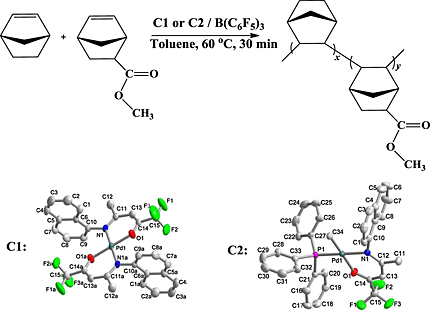
Pd(II) complexes bearing di- and monochelate fluorinated β-ketonaphthyliminato ligand were synthesized and employed to highly efficiently catalyze the vinyl-addition polymerization of norbornene with activity of 3.4 × 106 gpolymer molPd−1 h−1. They also show high catalytic activity towards copolymerization of norbornene and an ester-functionalized norbornene derivative (NB-COOCH3), the amount of which incorporated into the copolymer can be tuned from 2.8 to 21 mol% by controlling the NB-COOCH3 content in the feed.
Synthesis, characterization, molecular modelling and biological activity of 2-(pyridin-1-ium-1-yl) acetate and its Cu2+, Pt4+, Pd2+, Au3+ and Nd3+ complexes
- Pages: 712-719
- First Published: 28 July 2014
Synthesis and characterization of transition metal complexes of hydrochloride salt of 3-chlorobenzaldehyde hydralazine hydrazone: a new class of possible anti-cariogenic agents
- Pages: 720-724
- First Published: 22 July 2014
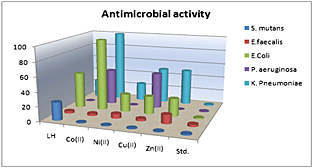
3-Chlorobenzaldehyde hydralazine hydrazone and its transition metal complexes were investigated for their antimicrobial activity against two Gram-positive and three Gram-negative bacterial strains and three fungal strains. Excellent inhibitory activity is exhibited against Gram-positive bacteria E. faecalis and S. mutans, which play a major role in tooth decay, and the fungal strain C. albicans.
Reactivity of mixed organozinc and mixed organocopper reagents: 11. Nickel-catalyzed atom-economic aryl–allyl coupling of mixed (n-alkyl)(aryl)zincs
- Pages: 725-732
- First Published: 28 July 2014




